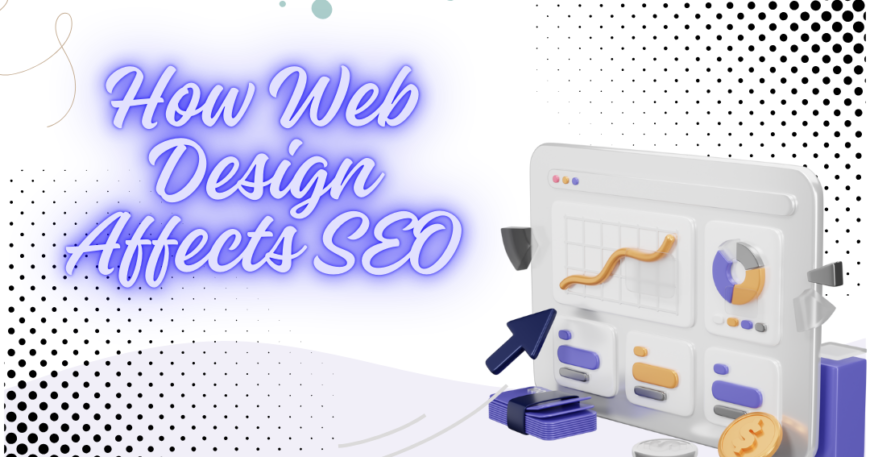The appearance of your website is not the only thing that matters; search engine optimisation (SEO) and, consequently, traffic and visibility are directly impacted by the design of your website.
A well-designed website makes it easier for search engines to comprehend and rank your business since it is organised, aesthetically pleasing, and optimised. Fast load times, mobile friendliness, and an easy-to-use interface are all features of a well-designed website that are critical to improving SEO.
By placing emphasis on these design components, you may improve user experience, lower bounce rates, and eventually rank higher in search results.
Let’s examine how SEO is impacted by web design in more detail:
1. User Experience
Because search engines like Google give preference to websites that offer a positive user experience, user experience (UX) is important for SEO.
Navigational simplicity of use, mobile friendliness, and page load speed are important UX elements that impact SEO.
A website that loads quickly, is mobile-friendly, and is simple to use increases conversions, decreases bounce rates, and maintains user engagement. A website’s organic search rankings are enhanced when it provides search engines with a positive user experience.
2. User Interface
In a device or software, the user interface (UI) serves as the hub for communication and interaction between humans and computers. Simple, fun interactions between the user and the product are made possible by a good user interface.
It is essential to provide a simple, user-friendly design that is easy for consumers to navigate in order to enable a seamless experience. The goal of user interface design (UI design) is to foresee potential user activities and make sure that the interface has features that are simple to use, understand, and access.
Typography, colour schemes, buttons, animations, and artwork are all used to help users navigate a product’s interface visually.
A website with well-designed user interface (UI) is easier to use and performs better because it’s easier to navigate.
3. Responsive Design
The appearance and content of a website are guaranteed to look and work properly on a variety of platforms, including PCs, tablets, and smartphones, thanks to responsive design.
This design strategy adjusts to the viewer’s device by using media queries, flexible layouts, and graphics that cascade style sheets (CSS). It’s critical since it has a big impact on how people interact with a website. Without responsive design, a website may seem broken, be difficult to use, or display content incorrectly on some devices, all of which can irritate visitors and cause them to quit.
By offering a consistent experience across various screen sizes and orientations, responsive design increases user happiness and can potentially raise retention and conversion rates.
4. Website Speed and Performance
User experience and SEO rankings are heavily influenced by the performance and speed of a website.
A website that loads quickly keeps users interested, lowers bounce rates, and encourages them to stay on the site longer and browse more pages. Among the methods used for performance optimisation include picture compression, browser caching, lowering the amount of HTTP requests, and code optimisation through the use of less JavaScript and CSS. The rate at which a page becomes interactive and helpful to the user is accelerated by these acts.
A vital component of online design and upkeep, enhanced website performance results in increased customer happiness, higher conversion rates, and improved search engine rankings.
Web Design and SEO Work Together to Drive Results
Working together, web designers and SEO experts can better align a website’s technical and aesthetic elements.
Early integration of SEO considerations into the design process helps to avoid any issues that could occur from retroactively adding SEO to an already-established design.
This can include technical problems that are easier to fix during the design stage rather than after the site is developed, such as mobile responsiveness, site speed optimisation, and proper semantic HTML structure.
Benefits of Considering SEO During the Design Process
1. Enhanced User Experience
2. Improved Site Structure
3. Cost and Time Efficiency
4. Avoiding Common SEO Pitfalls
Our Professional Web Design & SEO Services
Are you prepared to take the next step with your website? Join together with Jamal Prime Inc to take advantage of our SEO and web design know-how to produce a website that is visually stunning and performs exceptionally well in search results.
As a full-service digital marketing company, we provide a variety of services to assist generate outcomes that support the expansion of our clients. Together, you and our team of professionals will develop a unique plan that raises your profile and improves website traffic.
Get in touch with us right now to turn your web presence into a valuable tool for your company!
Conclusion
Web designers and SEO experts must work together to provide optimal user experience and search engine presence.
Their combined efforts guarantee that a website is optimised for search engines and has a pleasing visual design. Regular updates and optimisations are crucial because site design and SEO are process-driven endeavours that must adjust to evolving circumstances.
Together, these efforts result in a website that drives consistent traffic and engagement by drawing in and holding on to visitors.





